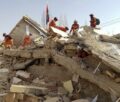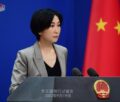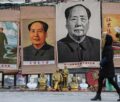Chinese tactics in suppressing Tibetan’s quest for freedom falling flat
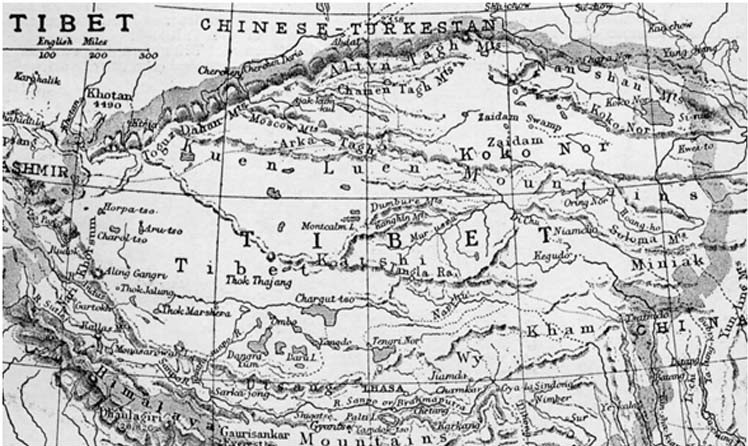
“Our parents who came in 1959, they never expected to live, let alone die in India. They always thought they would go back to Tibet.” Said Penpa Tsering La, current Sikyong (Political leader) of the Central Tibetan Administration (CTA), the Tibetan Government-in-Exile (TGiE).
Why did the Sikyong say this? Why do the Tibetans who were forced to seek asylum, which the Indian government compassionately granted in the late 1950’s onwards wants to go back to Tibet? The reason is simple and that is to go back to home – Independent Tibet.
Tibet in the modern era was one of the first among the many Asian nations to declare its independence and exert complete sovereignty without foreign powers including the Western imperial forces and the Japanese army, the latter conquering chunks of Qing Dynasty territory – The land of Manchuria.
On the 13th of February, 1913 His Holiness the 13th Dalai Lama declared Tibetan Independence and it was followed up by a statement in letter sent to every nook and corner of Tibet right from the capital of Lhasa in Ngari (Central Tibet) to the Do Kham (Western Tibet) regions of Tibet.
The gist of the declaration being a celebration of Tibet asserting their independence after driving out the last remnants of the Manchu Ambans (Ambassadors representing the Qing dynasty, larger China). The Qing was moving from the patron-priest relation (a spiritual political relation shared between the Emperor and the Dalai Lamas) and their removal was seen as a necessity in the international order which have started to adopt the Westphalian concept of nation-state.
China has no right ruling Tibet – in worst Oppression: While Tibet was gradually embracing the modern nation state concept and securing its borders, the people living in the remains of the Qing territory – Chinese was engulfed in a huge quagmire and a civil war that was to last till the late 1940’s.
After overthrowing the monarchy – Qing dynasty, there was an immediate power struggle in erstwhile China whose territories was a far cry to the current consolidated territory that now includes Manchuria (The Qing dynasty home territory of Manchu people), annexed and occupied Tibet (Tibetan Autonomous Regions and the Kham and Amdo – Eastern Tibet), East Turkestan, Southern Mongolia, Honk Kong and even the contesting Islands in the South China Sea.
The China then was not the People’s Republic of China (PRC, founded in 1949 after Chinese Communist party led by Mao Zedong declared Independence and a modern nation-state) now. One begs to ask the question of how China gained such huge swathes of territory in an era of decolonization?
Was it quietly colonizing territories and usurping independent nations? Why did they do it? Where they successful?
China’s so-called Liberation of Tibet is nothing but annexation and occupation of territory which rightfully belong to the Tibetan people. When in 2021 China celebrated the so-called 70 years in Liberating Tibet (1951 the year when the Seventeen Point Agreement was signed under duress), the Tibetan were continued to be oppressed, violated, harassed, assaulted, tortured, lynched and killed in their home land.
All leading to the completion of Beijing’s master plan of eradicating the Tibetans out from Tibet. Till now more than 160 Tibetans have been forced to self-immolate and sacrifice their lives while calling out for Tibetan independence, desiring the return of the Dalai Lama and condemning Beijing’s illegal occupation over Tibet.
China has no right to rule over Tibet but they still do so with international acceptance and uses it full authoritarian might in suppressing and oppressing Tibet. With many of the tactics including dispersal of human gathering through the use of force implemented in Honk Kong and other occupied territories first being tested in Tibet. Tibetans are now mere human testing subjects for Beijing in their own nation, which continues to be illegally occupied.
Xi Jinping and the PRC in Tibet – not working: The authoritarian communist forces in Beijing have devised cunning schemes in eradicating Tibetans and making Tibet their own. These include the Systematic Assimilation Project that ranges from Buddhism to education, language, employment and many more.
Recently UN experts noted a series of oppressive actions against Tibetan educational, religious and linguistic institutions, in contradiction to the right to education, cultural rights, freedom of religion or belief and other minority rights of the Tibetan people in a joint communication sent to China.
Free Tibet a UK based NGO that supports Tibet and their call for freedom and its partner organization Tibet Watch released a report in the UK titled as ‘Desecration in Drago County’ illustrates the repeated destruction of Tibetan Monasteries and Tibetan belief system. Beijing knowing that Buddhism is a stabilizing and uniting key for Tibetans, targets it as a means of wiping out the Tibetan people and culture.
Xi Jinping and his government is leaving no stones unturned in brining Tibet completely under their thumb. Nowadays there is widespread usage of Bio-security Apparatus. DNA and Iris Scan data being particularly extracted and collected from Tibetan without any consent shows how far at lengths China under this particular government goes.
Yet Tibetans continue to remain bold, and hold truth with them. Their faith to the Dalai Lama remains ever constant and Tibetan both inside and outside Tibet continue to work to raise the Tibet’s illegal occupation to the world and resolve the Tibet-China Conflict.
Conclusion:
It is sad to witness how Tibet, a nation proudly known as the Roof of the World, holding significant geopolitical location, lost its independence and was occupied by the PRC and PLA troops from 1949 onwards.
It is sad to visualize how the nation of Tibet is currently devolving into an international issue of Human Rights, but it is happening. The current CCP continues to manipulate and strong arm the world through revisionist policies to suit its claim over Tibet.
This is further amplified and illustrated by the recent historical landmark resolution which sees President Xi Jinping as president of PRC for an unprecedented 3rd term.
An act which the forefathers of PRC including Deng Xiaoping amended in their constitution intentionally to prevent an authoritarian dictatorship ruling PRC, only to be amended again by Xi Jinping.
However, with the onset of the famous reassertion that proclaimed Tibet’s independence on 13th February to the world, though it fell on deaf ears then, we must uphold the values and truth from it.
Passing it to the generations to come, keeping the flame of independence burning strongly as ever and return home. As the famous Tibetan slogan goes, Tibet regaining independence is ‘The will of the dead’ and ‘The hope of the living’. BhodGyalo !!! (Voices Against Autocracy)
- report on Daily Asian Age, Dhaka
-
Book Shelf
-
 Book Review
DESTINY OF A DYSFUNCTIONAL NUCLEAR STATE
Book Review
DESTINY OF A DYSFUNCTIONAL NUCLEAR STATE
- Book ReviewChina FO Presser Where is the fountainhead of jihad?
- Book ReviewNews Pak Syndrome bedevils Indo-Bangla ties
- Book Review Understanding Vedic Equality….: Book Review
- Book Review Buddhism Made Easy: Book Review
- Book ReviewNews Elegant Summary Of Krishnamurti’s teachings
- Book Review Review: Perspectives: The Timeless Way of Wisdom
- Book ReviewNews Rituals too a world of Rhythm
- Book Review Marx After Marxism
- Book Review John Updike’s Terrorist – a review
-
-
Recent Top Post
-
 NewsTop Story
What Would “Total Victory” Mean in Gaza?
NewsTop Story
What Would “Total Victory” Mean in Gaza?
-
 CommentariesTop Story
The Occupation of Territory in War
CommentariesTop Story
The Occupation of Territory in War
-
 CommentariesTop Story
Pakistan: Infighting in ruling elite intensifies following shock election result
CommentariesTop Story
Pakistan: Infighting in ruling elite intensifies following shock election result
-
 CommentariesTop Story
Proforma Polls in Pakistan Today
CommentariesTop Story
Proforma Polls in Pakistan Today
-
 CommentariesTop Story
Global South Dithering Away from BRI
CommentariesTop Story
Global South Dithering Away from BRI
-
 News
Meherabad beckons….
News
Meherabad beckons….
-
 CommentariesTop Story
Hong Kong court liquidates failed Chinese property giant
CommentariesTop Story
Hong Kong court liquidates failed Chinese property giant
-
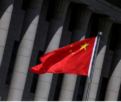 CommentariesTop Story
China’s stock market fall sounds alarm bells
CommentariesTop Story
China’s stock market fall sounds alarm bells
-
 Commentaries
Middle East: Opportunity for the US
Commentaries
Middle East: Opportunity for the US
-
 Commentaries
India – Maldives Relations Nosedive
Commentaries
India – Maldives Relations Nosedive
-
AdSense code

















